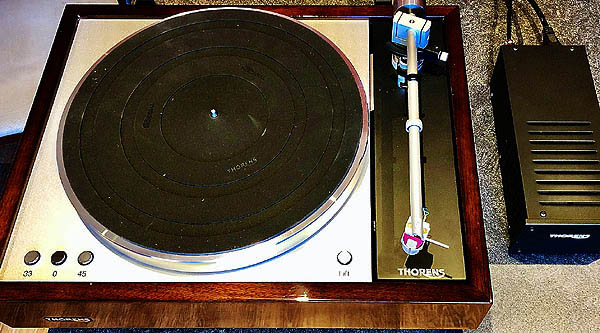
[Italian version here]
[ Home | Staff & Contacts | HiFi Playground | Listening tests | DIY & Tweakings | Music & Books ]
Product: TD1600 and TD 1601 Turntables
Manufacturer: Thorens GmbH
Price: £2299 (TD1600) and £2799 (TD1601) YMMV
Reviewer: Mark Wheeler - TNT UK
Reviewed: November, 2019
Under new ownership since May day 2018, by enthusiast, Gunter Kürten, Thorens have introduced a worthy successor to their successful 1970s market leader, the TD 160 (and its various siblings), itself a development of the 1960s market defining TD150 turntable. The new Thorens TD1600 and TD1601 rethink the subchassis turntable from first principles, including two significant innovations in addition to the expected refinements of half a century of development.
The Thorens TD150 set the layout for the Ariston RD11 and Linn Sondek LP12 (both created when UK import tax and duties rendered the imported Thorens prohibitively expensive in the UK) and parts could swapped between all three. Thorens replaced the TD150 series of models with the TD160 series which addressed the challenge of an asymmetrical bouncing mass by repositioning the springs better to maintain even spring tension. The Thorens TD1600 and TD1601 build on this improved suspension pattern by reconsidering the suspension mount system and by addressing the constant lateral and rotational oscillation problem inherent in the whole sprung subchassis concept.
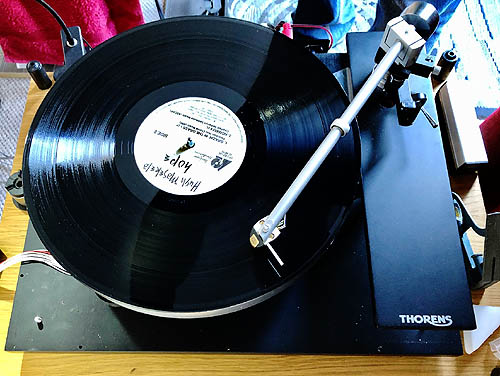
This the first peek at, and first listen to, these innovative Thorens models, which come hot on the heels of Joachim Bung's magnificent two volume history of Thorens, and our 3 part review of the Audiofiles Spoke modification for subchassis turntables. The latter is equally relevant as Thorens, the world's oldest entertainment electronics brand, have introduced a similar tie wire to avoid presence in the TD1600 subchassis. A "Subchassis that's almost free of wobbling" they claim. This step forward in coil sprung subchassis development follows a small number of similar developments in the aftermarket industry, much like companies like Harley Davidson witnessed such improvements to their Shovelhead engines by aftermarket makers that they incorporated many of those developments into their next generation Evo (never blockhead, please) engines. Thorens have moved premises to Bergisch Gladbach, increasingly Germany's home to high end analogue, while production of the TD1600/TD1601 is from China to Thorens design and specification, as is all too common in the 21st century.
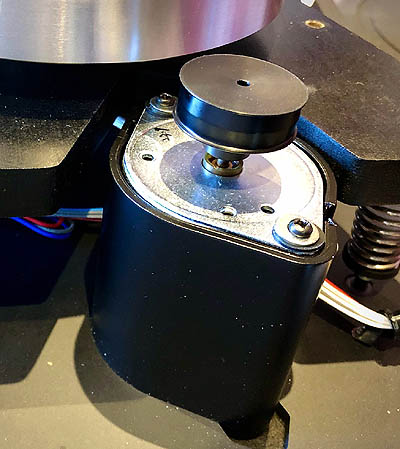
Externally similar to traditional Thorens turntable products, the new TD1600/TD1601 models differ in more than just an extra digit and a subchassis tie wire. The tie wire tension can be adjusted by rotating the hexagonal section brass pillar shown in the picture (also visible is the optical arm position detector of the TD1601 arm lift). The spring is attached to an eccentric position nipple atop the brass pillar to maintain bounce. Bounce is easily established first with no belt, then the belt and tie wire are added and balanced. This is the easiest set up compression spring subchassis turntable any of us present have encountered. Curiously, Thorens have included the much derided foam cores in the conical springs to damp ringing.
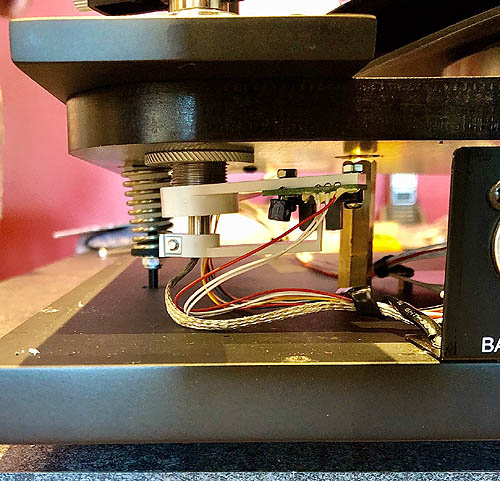
Instead of hanging the motor and compression spring towers from a metal top plate, as copied by Ariston and Linn, Thorens have planted both motor and suspension towers firmly on the ground via the thick mdf base chassis. Gone is the traditional floppy fibreboard nbase dust cover, to be replaced by the secure foundations of the new model. That phrase, unlike so many cut'n'pasted from a press release in so many of the advertising driven audio comics and web pages, is what sprang to mind when your Old Scribe & pals could not resist dismantling one of the samples.
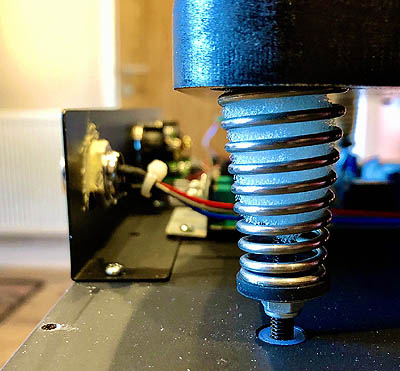
The subchassis is made from a dense type of mdf (which regular readers will know is your Old Scribe's least favourite material in all of audio applications) mitigated by an aluminium strap bonded to the surface a la Rega. Nestling within a rout below this aluminium plate, resembling the truss rod of a guitar, is the flexible multistrand twist of tie wire. This is positioned as a reference against the motor torque transmitted by the belt. Being a single multistrand cable, this will have less effect on rotational forces than the equilateral Spoke arrangement, but will also have less effect on the suspension capacity to isolate subchassis from turntable support. Thorens are clearly aiming this model at a slightly less specialist market than a Spoke modified Linn Sondek LP12. The presence of the Thorens TD1601 model confirms this.
£500 extra buys the £2799 Thorens TD1601 over the £2299 TD1600.
This £500 buys an optical sensor arm lift.
"£500 for an end of side arm lift?" Demand Plebs, stage left,
"Surely that's a lot of dosh to avoid beedup beedup beedup, when the Old Scribe falls asleep at the turntable?"
The optical sensor arm lift employs a solenoid to lift the arm at the end of the record, activated by an adjustable optical sensor at the base of the arm. It also means that contemporary Thorens can employ the front of plinth arm lift control, positioned similarly to the TD150 & TD160 (and even variants of the great TD125) without the complex mechanical linkage of earlier models. This also means that TD1601 owners do not need a micro-surgeon's touch to operate the arm base arm lift on the TP92 arm fitted to the TD1600.
The sample TD1601 came in a beautiful plinth, finished in piano gloss rosewood veneer (admittedly over your Old Scribe's unfavourite mdf). This was aesthetically superior in every respect to the plain black plinth of the sample TD1600. The TD1601 had been shown at the Woodland Grange Audio Show, from whence it had been whisked away to a British print magazine's reviewer's lair, before suffering the degradations of a photographer's whims, before arriving on the TNT-Audio doorstep. Sadly the poor thing needed some TLC following this ordeal as the motor was now out of alignment (the belt was running on the wrong part of the pulley) and the optical sensor paddle was also adrift. The latter had also happened when this pre-production prototype arrived at the Woodland Grange show, where Gunter Kürten himself had whipped out his tool and set the turntable up correctly.
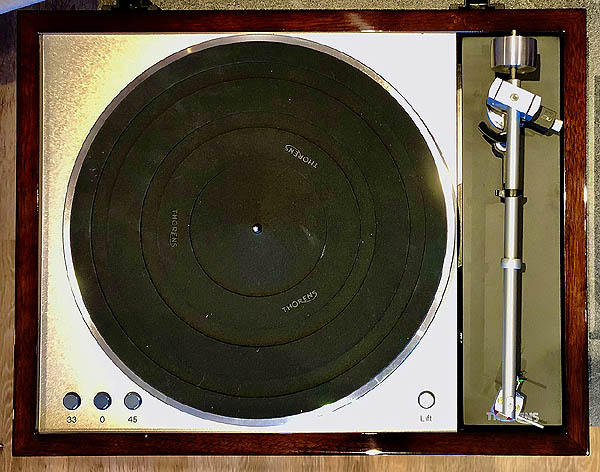
The additional LED illuminated button, control circuit and arm base solenoid are all that differ between the two model variations. It raises and lowers the Thorens TP92 pickup arm without the user having to disturb the subchassis, as used to be achieved on the TD150/TD160 variants by means of rods, levers and a friction damper like a vintage car.
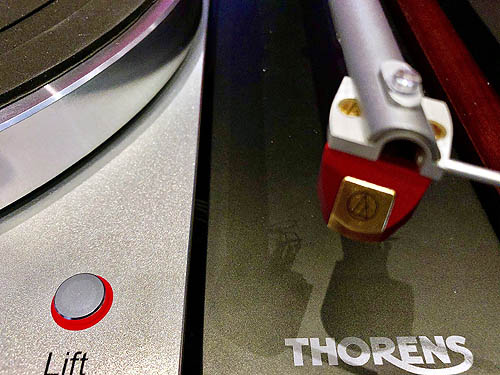
The Thorens TP92 pickup arm looks very well designed, adjustable for azimuth and overhang (Beowald/Löfgren A geometry) and seemed well made in use. The gimbal vertical bearing is aligned to the axis of the headshell and the bearing below the arm tube centre, reducing warp wow. The adjustable counterweight (a simple uncalibrated block of stainless steel that turns on a screwthread to adjust downforce) axis is aligned to the plane of the stylus contact patch with the vinyl (with recommended cartridges) to minimize changes in downforce while warp tracing. The arm tube is of multi-layer aluminium, with effective mass of 11g. The arm tube was analysed by Thorens R&D with laser interferometry to identify resonant modes. A single fixed external damper ring is then applied at the precise point where it will damp the first tube resonant mode. The overall centre of gravity is directly beneath the arm tube, which they claim minimizes torsional vibration.
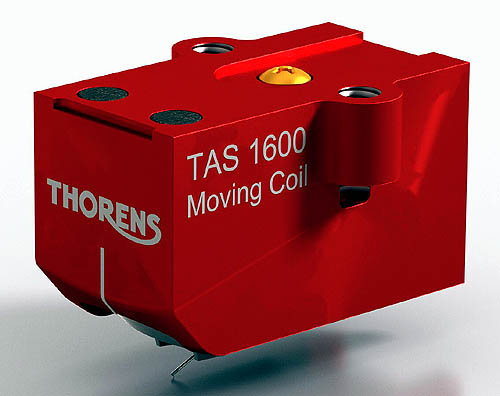
There is a recommended Thorens TAS1600 pickup cartridge. This is the latest Audio Technica OC9X with the Micro Ridge stylus and priced identically to the Audio Technica, despite being in a substantially revised solid aluminium body. Whatever cartridge is fitted, balanced output is obtained either by conventional 2X RCA sockets plus earth tag or more sensibly, 2X male XLR on the rear of the plinth. There is an external power supply to keep the mains voltages away from the sensitive moving coil pickup wiring, which successfully prevented any hum in the test system. Like the past flagship Thorens TD125, the electronic power supply might be expected to reduce pitch instability and motor vibration.
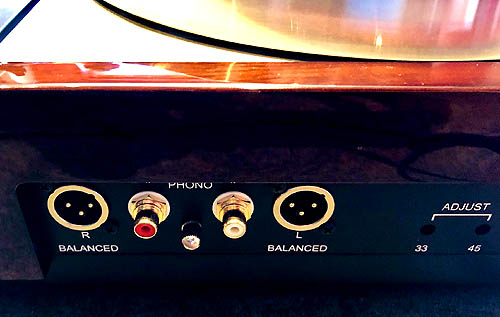
"Oh Joy!" Quoth Plebs, stage left, "The Old Scribe does not get to moan about 4 equipment feet or drone on about the iinherent stability of tripods.
Clearly this Old Scribe prejudice is familiar enough to regular readers not to need much explaining.
The Thorens TD150, the Linn Sondek, the Thorens TD160 (and variants) all sound better with the two rear feet replaced by a single
central foot. This will be especially noticeable with the TD1600/TD1601 referencing motor and suspension to the sturdy baseboard.
Instead of a flexible plinth top plate (original Linn LP12 and Ariston RD11) or folded steel top plate (TD160) supporting
motor and suspension towers, the TD1600/TD1601 seems to be a laminated (possibly phenolic?) sheet with an acrylic 'aluminium'
finish thus protected from fingerprints and providing a sturdy position for switches in the traditional locations.
Now the speed change switch applies electronically to change the phase to the OEM type low voltage synchronous motor (familiar in both
low voltage and 120/230V versions in numerous turntables), instead of moving the belt on the pulley.
The motor runs at lower speed than in the
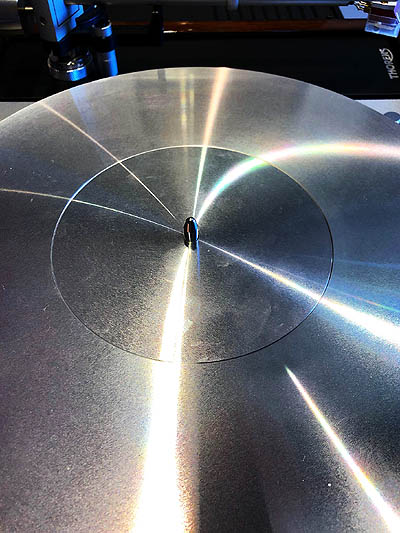
Equally fresh is the beautifully finished, fully machined and dynamically balanced aluminium alloy platter, replacing the ubiquitous Zamak/Mazak items still fitted to turntables whose origins date back to the 60s & 70s. Thicker and heavier than the original, keyhole punched platter and subplatter assembly, although the 2-part diameter is identical, making this a likely upgrade for original TD150/TD160 & LP12. The Turntable spins up to speed unaided at about the same rate as most similar looking turntables. The electronic power supply and speed control, common to both models, feeds a lower voltage synchronous motor. Perhaps the Thorens TD1601 sits somewhere between the old TD160 and the heavily engineered 70s flagship TD125 which your old scribe found to comfortably outperform the early pre-Valhalla Linn Sondek, side by side with the same arm and cartridge.
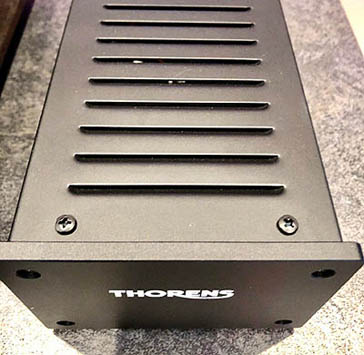
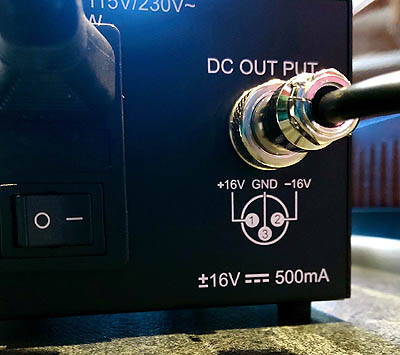
This is not an entirely representative listen, the Thorens TD1600 was auditioned in a mostly familiar system, but that has had a new DSP active crossover since last heard, housed in a room with new carpets and curtains. Furthermore, the sample Thorens TD1600 was running without its plinth because enquiring minds wanted to understand its operational characteristics. The Thorens TP92 pickup arm was carrying the current version of the excellent Audio Technica OC9, the AT OC9XSL
With those caveats, The Thorens TD1600/AT OC9XSL sounded perfectly balanced from the first note. There was no discernible colouration from the arm, no thickening from the mdf subchassis, nor pitch instability from either poor suspension design nor power supply. The music flowed without any of us noticing any undue emphasis nor any shortcomings.
The Audio Technica OC9 has long been a flat earth favourite, notable for its
PRaT in some of the best arms in the world.
Even diehard Linnies are happy to carry them in their Ittok and Ekos, experiencing no disturbance to their Karma.
"Oh No! The Old Scribe is Asaking too much of readers to stomach that pun" Wail Plebs, stage left.
That Thorens have selected a modified version of this demanding cartridge as the standard recommendation for the TP92 pickup arm speaks volumes about their confidence in the performance of this gimbal pickup arm. The familiar AT OC9X qualities are all present and correct. That is all we ask of a pick-up arm.
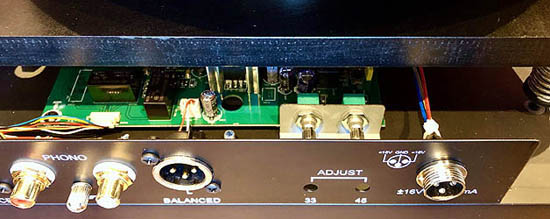
With a whole series of Old Scribe articles in prep on the inherent rightness of the Thorens TD160, the sudden arrival of a new variation of that 70s stalwart, was bound to raise interest in the hilltop lair of TNT-audio's Old Scribe. That the new Thorens TD1600 (and its arm lift stablemate TD1601) addresses the few shortcomings (by contemporary standards) of the original, is even better. That the new model sounds so excellent and has an arm capable of carrying one of the most effective cartridges of all time, at under two and a half grand (the British pound's recent decline making this even truer in most first world currencies) adds to the appeal.
The Thorens TD1601 packaged with the Thorens TAS1600 moving coil pickup cartridge would be their perfect partner to anyone's return to high-end vinyl. Thorens can even supply a choice of moving coil phono stages to match.
This is a welcome return to form by Gunter Kürten's revitalised company. Thorens are now ready for 21st century global markets with a German designed and developed produced, manufactured in China and distributed worldwide, that perfectly fits our expectations of their portfolio.
DISCLAIMER. TNT-Audio is a 100% independent magazine that neither accepts advertising from companies nor requires readers to register or pay for subscriptions. After publication of reviews, the authors do not retain samples other than on long-term loan for further evaluation or comparison with later-received gear. Hence, all contents are written free of any “editorial” or “advertising” influence, and all reviews in this publication, positive or negative, reflect the independent opinions of their respective authors. TNT-Audio will publish all manufacturer responses, subject to the reviewer's right to reply in turn.
Copyright © 2019 Mark Wheeler - mark@tnt-audio.com - www.tnt-audio.com
[ Home | Staff & Contacts | HiFi Playground | Listening tests | DIY & Tweakings | Music & Books ]